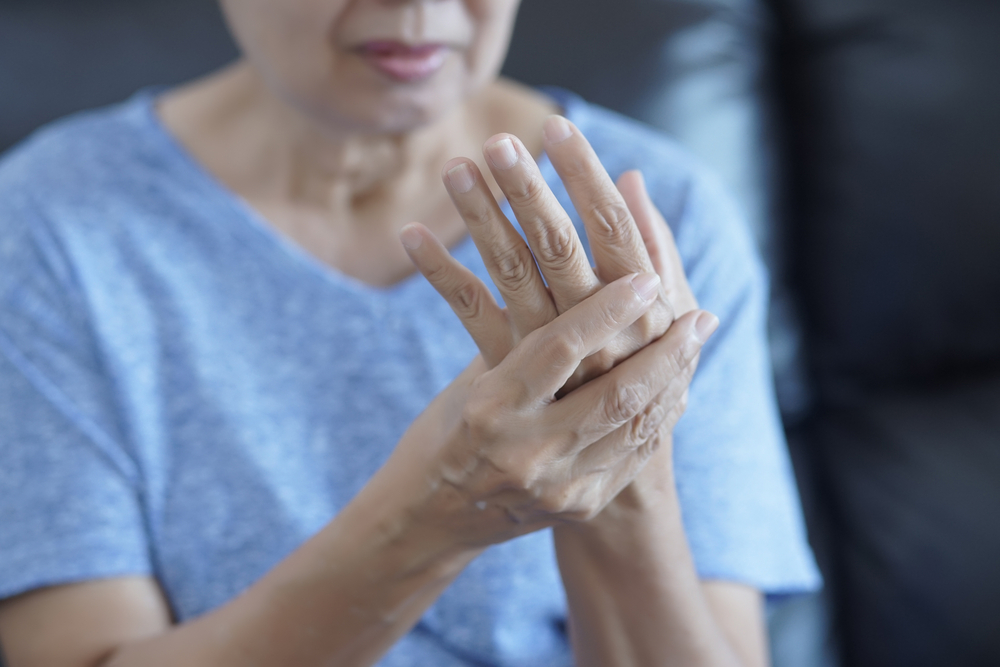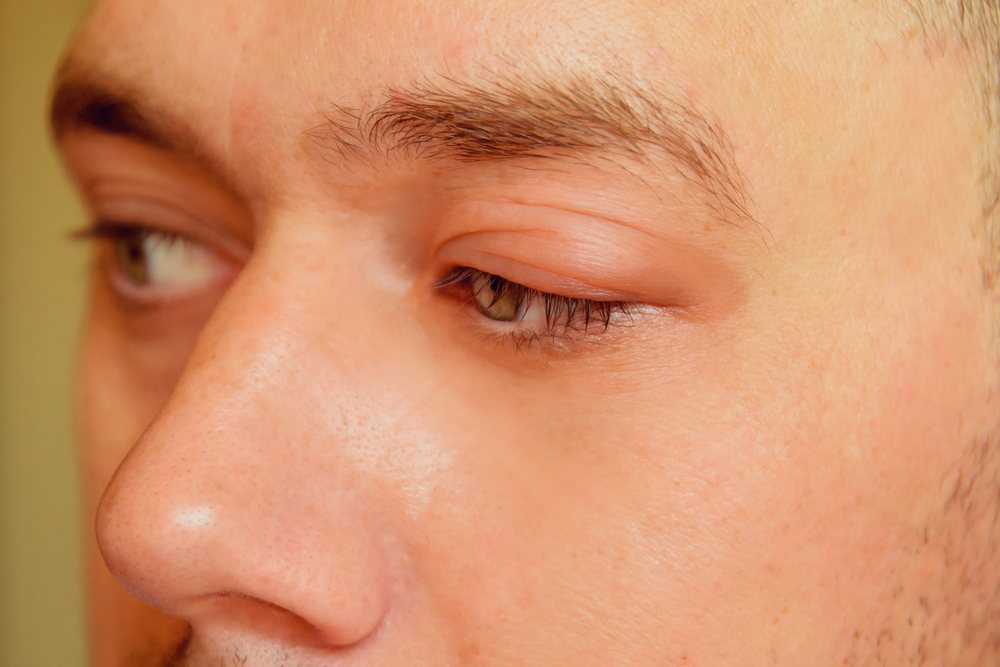- Surgery for hand arthritis is often a last resort when other treatment options have failed.
- Many surgical options eliminate arthritis pain at the expense of hand function.
- The type of surgery available to you depends on the type of arthritis you have.
Approximately 54.4 million adults in the United States were diagnosed with some form of arthritis from 2013 to 2015, according to the Centers for Disease Control and Prevention (CDC). Osteoarthritis is the most common form of the condition, affecting an estimated 31 million people. It is followed closely by rheumatic conditions like gout and rheumatoid arthritis.
What is arthritis in the hands?
The word arthritis comes from the Greek “athron” (joint) and “-itis” which together mean “joint disease.” In this aptly named condition, joints stiffen and become painful because of inflammation. Different types of arthritis are named for the various causes and underlying conditions that lead to joint inflammation. The following list below does not include all forms of arthritis, just the most likely candidates of arthritis that affects the hands.
Types of arthritis in the hands
Osteoarthritis
This common form of the disease occurs when the smooth cartilage between bones wears away. Cartilage protects your bones at the joint; without it, your bones can be damaged and the joint can become painful and inflamed.
Osteoarthritis is not a disease that you catch. It’s common in older people and those with jobs that require repetitive movements that overwork certain joints. In short, age and repeated stress can wear the cartilage down.
Symptoms
- Pain
- Stiffness
- Grating sensation as bones rub together
- Bone spurs (hard lumps that form around the bone due to friction)
Rheumatoid arthritis
Rheumatoid arthritis is an autoimmune disease. Autoimmune diseases occur when the body’s immune system starts attacking itself. In the case of rheumatoid arthritis, the body targets the cartilage at the joints, causing the joints to become inflamed. This disease tends to attack smaller joints first, making it a particularly common cause of hand arthritis.
Symptoms
- Stiffness, pain, and friction
- Fever
- Fatigue
- Weight loss
- Can affect parts of the body that don’t involve joints, like the skin, eyes, heart, and blood vessels.
Psoriatic arthritis
This less common form of arthritis occurs in people who have psoriasis, a skin disease that causes red and silver scaly patches that can be itchy and painful. Psoriatic arthritis causes pain and swelling in joints in different parts of the body, including the hands. In such cases, the treatment of arthritis goes hand in hand with the treatment of the underlying condition.
Post-traumatic arthritis
Injury that leads to damage in the joints, like fractures and dislocations, can cause severe inflammation. With so many fine joints in the fingers, trauma to the hand can cause hand arthritis.
Symptoms
- Typical arthritis symptoms
- Deformity in the affected joint
- Looseness of the joint
- Ganglion cysts near the joint
» If you’re experiencing joint pain and suspect that you might have arthritis, meet our medical review team.
Hand arthritis treatment options
If you are diagnosed with arthritis, it’s unlikely that your physician will jump right to surgery. Arthritis can be treated in a variety of ways, depending on the underlying cause. The following treatment options are not the only ones on the table. These are simply some of the more common ways of dealing with arthritis.
- Stay active: It’s difficult to keep moving when you’re in pain, but movement can slow the progression of arthritis by combating stiffness and replenishing the cartilage in the affected joint.
- Healthy diet: Weight management also plays an important role in arthritis management. Obesity is a risk factor for osteoarthritis and it can make arthritis symptoms worse by putting additional pressure on the joints. Given that arthritis patients are less likely to engage in vigorous exercise, it’s essential that they take care to avoid unhealthy foods.
- Hand exercises: Your physician or a hand therapist might instruct you to complete a series of hand exercises several times a day. There are dozens of potential hand exercises, from slowly opening and closing your fist to touching your thumb to each finger in turn. Before attempting any exercises, consult your physician who will be able to recommend specific exercises for your condition.
- Medication: Many arthritis symptoms can be managed with over-the-counter anti-inflammatory medication and other painkillers. Talk to your physician about dosages. There are also some topical medications that can relieve pain and inflammation. Dr. Jerry Chidester, a Fellow in hand surgery at the University of Southern California in Los Angeles, notes that medication for rheumatoid arthritis is becoming more effective. These medications offer “better control” and patients require “less surgery,” he says.
- Steroid injections: Some physicians turn to corticosteroid injections when more conservative pain management options aren’t working. Injections provide fast relief for inflammation, but they aren’t a viable long-term option as steroids can weaken tendons and ligaments over time.
- Viscosupplementation: This is an injection that uses hyaluronic acid, which lubricates the joint and provides relief from friction.
Although these treatments have been shown to be effective for many patients, it’s possible your physician will recommend surgery. That depends on how far the disease has progressed, your age, your activity level, and your success with nonsurgical treatments. These factors also influence the type of surgery you undergo.
What are your hand surgery options? Put simply, arthritis hand surgery comes down to two main categories: joint fusion and joint replacement.
Hand arthritis surgery options
Arthritis hand surgery: fusion
Fusion surgery is fairly straightforward. In short, your surgeon scrapes away damaged cartilage from the affected joint. This allows the bones on either side of the joint to fuse together. When it comes to finger joints, surgeons will also insert a prosthetic wire to comfortably fix the bones in place. In some cases, the surgeon might also hollow out one bone and create a cone with the other, fitting the bones together like a lock and key.
However your surgeon goes about it, the end result is the same. Your joint is replaced by a large and stable knuckle. By eliminating the friction caused by the bones rubbing together at the joint, your surgeon relieves your arthritic pain.
Also called arthrodesis, joint fusion surgery reliably ensures that the arthritis won’t return to the affected area. After all, there’s no longer any joint there to become inflamed. This can be a viable option for those with osteoarthritis that is acutely painful. However, the painlessness does come at a cost.
Joint fusion surgery will limit movement and flexibility. After all, the joint’s role is to allow for bending motions. Fusion surgery for the thumb allows for more retention of movement. Those who undergo thumb fusion surgery are typically still able to grip and pinch.
This surgery can also lead to complications. As with most surgeries, there’s a chance of infection and scarring. Fingers are highly sensitive and delicate parts of the body and joint fusion surgery in the hand also risks damage to surrounding nerves and blood vessels.
Arthritis hand surgery: joint replacement
For those looking for a surgical solution that does not sacrifice mobility, there is another option. Joint replacement surgery — also called arthroplasty or total knuckle replacement — is more complex than fusion surgery. With joint replacement, the surgeon replaces the arthritic joint with a prosthetic one.
In a standard total knuckle replacement, the surgeon completely removes the damaged joint and replaces it with an implant, usually made from silicone rubber. This implant provides flexibility and movement while relieving arthritic pain.
However, the implants are far from perfect. Silicone rubber prosthetics break easily under pressure and with overuse. In fact, about 30% of them fail within a decade. Some doctors have taken to using carbon or metal implants, which are less prone to breaking but are also less flexible. Occasionally, a surgeon will fashion a “prosthetic” out of your own tissue. The material your surgeon chooses will depend on the joint in question and your activity level.
Risks associated with this procedure include weakening or misalignment of the artificial joint. As mentioned above, it can break or slip out of place. The implant can also fail, leading to further stiffness and pain.
Variations and surgical alternatives
Although fusion and replacement are the two primary surgical options for the treatment of arthritis in the hand, some less common surgeries can come into play, depending on your specific situation.
- Resection arthroplasty: The surgeon removes the affected joint without inserting a replacement. The space fills in with scar tissue.
- Surgical cleaning: The surgeon removes bone spurs and damaged tissue.
- Joint denervations: Dr. Michael Nancollas an orthopedic surgeon with the Berkshire Hand to Shoulder Center in Lenox, MA, describes this procedure as “cutting nerves that go into the joint” that cause pain in the affected joint.
- Ligament reconstruction and tendon interposition: This surgery is specific to thumb arthritis. The surgeon removes the damaged ligament at the base of the thumb and reconstructs the remaining ligament using tendons from other parts of the hand. This procedure also involves removing all or part of the trapezium bone beneath the carpometacarpal joint. This is one of the more common surgical procedures for the treatment of thumb arthritis.
- Hematoma and distraction arthroplasty: This more controversial procedure is also specific to thumb arthritis. The surgeon completely removes the trapezium bone at the base of the thumb. A wire holds the bones in place and is removed after the body heals itself. No repairs are made to the ligaments.
Whatever procedure you undergo, you will likely be given a splint after surgery. In the case of joint fusions, your hand could be entirely immobilized until the bones are completely healed, says Dr. Nancollas.
Also on the post-surgery menu is a visit to a hand therapist. “I’m the ‘first stop’ post-operatively,” says Lynn Festa, a hand therapist in Syracuse with more than 26 years of experience who works closely with Dr. Nancollas.
Festa says she “will remove the post-op dressings and treat according to protocol.” This includes educating patients about equipment and exercises that can help them in recovery.
Choosing the right procedure
The right procedure for you should be chosen after a conversation between you and your physician. There is no clear point at which surgery becomes necessary. It’s going to come down to how the arthritis affects your quality of life and whether you’ve had success with other treatment strategies.
Surgery is effective but risky, and it’s certainly not your only option. Be honest with yourself about what you need, use your physician as a resource, and heed their advice.









